Diazepam causes sedative rather than anxiolytic effects in C57BL/6J mice
- PMID: 33927265
- PMCID: PMC8085115
- DOI: 10.1038/s41598-021-88599-5
Diazepam causes sedative rather than anxiolytic effects in C57BL/6J mice
Abstract
Diazepam has been broadly accepted as an anxiolytic drug and is often used as a positive control in behavioral experiments with mice. However, as opposed to this general assumption, the effect of diazepam on mouse behavior can be considered rather controversial from an evidence point of view. Here we revisit this issue by studying the effect of diazepam on a benchmark task in the preclinical anxiety literature: the elevated plus maze. We evaluated the minute-by-minute time-course of the diazepam effect along the 10 min of the task at three different doses (0.5, 1 and 2 mg/kg i.p. 30 min before the task) in female and male C57BL/6J mice. Furthermore, we contrasted the effects of diazepam with those of a selective serotoninergic reuptake inhibitor (paroxetine, 10 mg/kg i.p. 1 h before the task). Diazepam had no anxiolytic effect at any of the tested doses, and, at the highest dose, it impaired locomotor activity, likely due to sedation. Noteworthy, our results held true when examining male and female mice separately, when only examining the first 5 min of the task, and when animals were subjected to one hour of restrain-induced stress prior to diazepam treatment. In contrast, paroxetine significantly reduced anxiety-like behavior without inducing sedative effects. Our results therefore suggest that preclinical studies for screening new anxiolytic drugs should be cautious with diazepam use as a potential positive control.
Conflict of interest statement
The authors declare no competing interests.
Figures
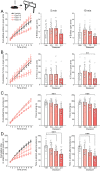
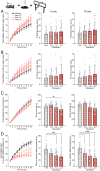
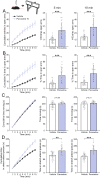
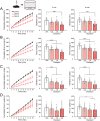
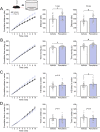
Similar articles
-
Genotypic differences between C57BL/6 and A inbred mice in anxiolytic and sedative actions of diazepam.Behav Genet. 1998 Mar;28(2):125-36. doi: 10.1023/a:1021424108213. Behav Genet. 1998. PMID: 9583238
-
Differences in anxiety-related behaviours and in sensitivity to diazepam in inbred and outbred strains of mice.Psychopharmacology (Berl). 2000 Feb;148(2):164-70. doi: 10.1007/s002130050038. Psychopharmacology (Berl). 2000. PMID: 10663431
-
Diazepam effects on anxiety-related defensive behavior of male and female high and low open-field activity inbred mouse strains.Physiol Behav. 2023 Nov 1;271:114343. doi: 10.1016/j.physbeh.2023.114343. Epub 2023 Sep 9. Physiol Behav. 2023. PMID: 37689380 Free PMC article.
-
Anxiolytic and anxiogenic effects of diazepam in male mice with different experience of aggression.Bull Exp Biol Med. 2002 Apr;133(4):372-6. doi: 10.1023/a:1016202205966. Bull Exp Biol Med. 2002. PMID: 12124649
-
The anxiolytic effect of acute ethanol or diazepam exposure is unaltered in mu-opioid receptor knockout mice.Brain Res Bull. 2001 Aug;55(6):755-60. doi: 10.1016/s0361-9230(01)00569-x. Brain Res Bull. 2001. PMID: 11595359
Cited by
-
Caution Influences Avoidance and Approach Behaviors Differently.J Neurosci. 2022 Jul 27;42(30):5899-5915. doi: 10.1523/JNEUROSCI.1892-21.2022. Epub 2022 Jun 15. J Neurosci. 2022. PMID: 35705490 Free PMC article.
-
The effect of SSRIs on unconditioned anxiety: a systematic review and meta-analysis of animal studies.Psychopharmacology (Berl). 2024 Sep;241(9):1731-1755. doi: 10.1007/s00213-024-06645-2. Epub 2024 Jul 9. Psychopharmacology (Berl). 2024. PMID: 38980348 Free PMC article.
-
Unveiling the anxiolytic and analgesic effects of citronellal in Swiss mice: in vivo and in silico insights into COX and GABAA receptor pathways.Naunyn Schmiedebergs Arch Pharmacol. 2025 May;398(5):5757-5771. doi: 10.1007/s00210-024-03665-9. Epub 2024 Nov 28. Naunyn Schmiedebergs Arch Pharmacol. 2025. PMID: 39607546
-
Recovery of Naringin-Rich Flavonoid Extracts from Agroresidues with Anxiolytic- and Antidepressant-like Effects in Mice.Molecules. 2022 Dec 3;27(23):8507. doi: 10.3390/molecules27238507. Molecules. 2022. PMID: 36500599 Free PMC article.
-
Synergistic Sedative Activity of Indirubin on Diazepam in Thiopental Sodium-induced Sleeping Mice: A Potential GABAergic Transmission.Mol Neurobiol. 2025 Jul 1. doi: 10.1007/s12035-025-05176-x. Online ahead of print. Mol Neurobiol. 2025. PMID: 40593261
References
-
- Bertoglio, L. J. & Carobrez, A. de P. Methodological and Theoretical Issues in Experimental Modeling of Anxiety in Animals. in Experimental Animal Models in Neurobehavioral Research 16 (Nova Science Publishers, 2009).
Publication types
MeSH terms
Substances
LinkOut - more resources
Full Text Sources
Other Literature Sources

